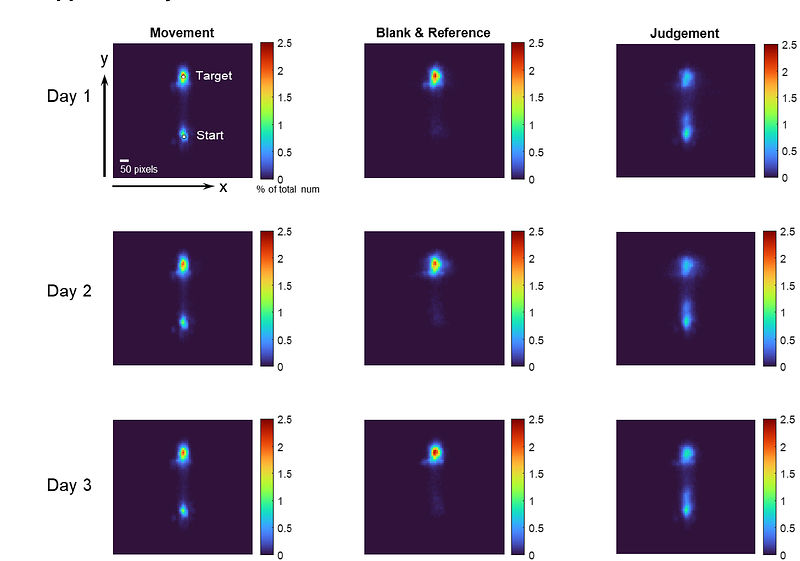Perceptual error based on Bayesian cue combination drives implicit motor adaptation

Perceptual error based on Bayesian cue combination drives implicit motor adaptation
Zhang, Z.; Wang, H.; Zhang, T.; Nie, Z.; Wei, K.
AbstractThe sensorimotor system can recalibrate itself without our conscious awareness, a type of procedural learning whose computational mechanism remains undefined. Recent findings on implicit motor adaptation, such as over-learning from minor perturbations and swift saturation for increasing perturbation size, challenge existing theories based on sensory errors. We argue that perceptual error, arising from the optimal combination of movement-related cues, is the primary driver of implicit adaptation. Central to our theory is the linear relationship between the sensory uncertainty of visual cues and perturbation, validated through perceptual psychophysics (Experiment 1). Our theory predicts diverse features of implicit adaptation across a spectrum of perturbation conditions on trial-by-trial basis (Experiment 2) and explains proprioception changes and their relation to visual perturbation (Experiment 3). By altering visual uncertainty in perturbation, we induced unique adaptation responses (Experiment 4). Overall, our perceptual error framework outperforms existing models, suggesting that Bayesian cue integration underpins the sensorimotor system\'s implicit adaptation.